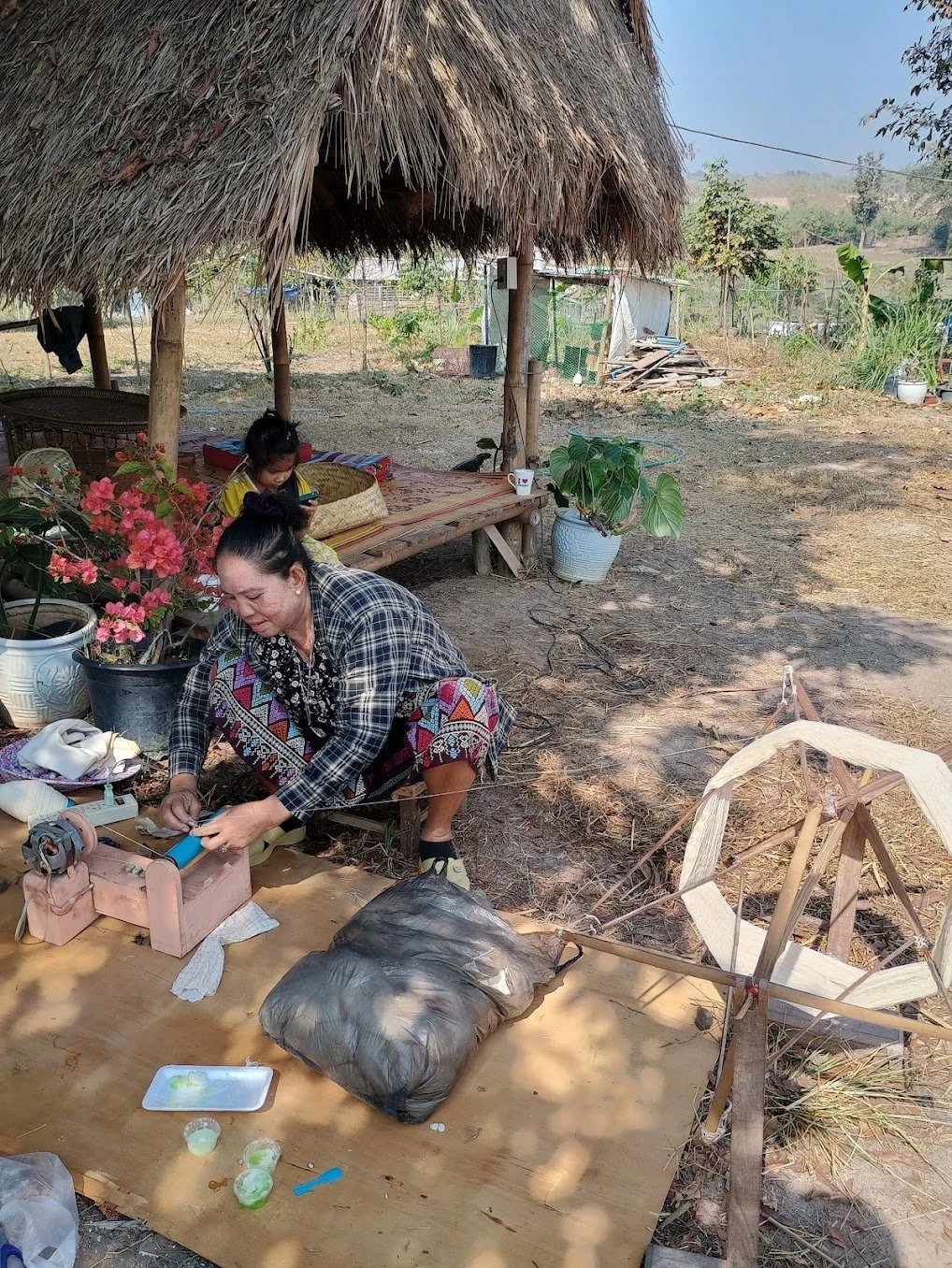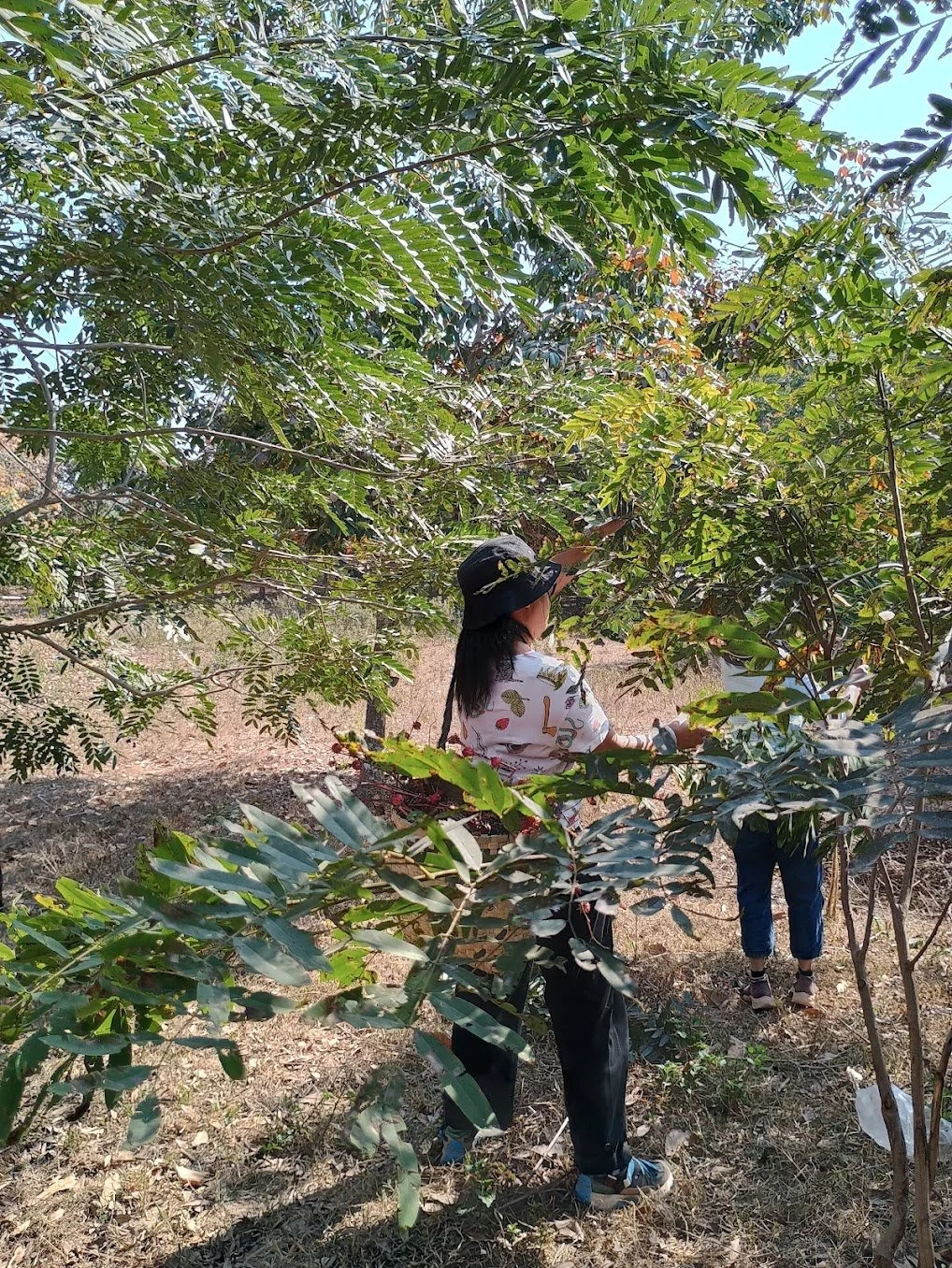Natural Dyeing and Weaving School 2025
In 2004, I set out on a transformative journey to establish a social enterprise, Eastern Weft, alongside my mentor and weaving master, Khaisy Sophabmixay. Our mission was to create beautiful contemporary textiles while supporting young artisans from ethnic minorities, particularly the hill tribes of Northern Laos. With Khaisy's vision, we built a weaving house and boarding facility on her land, turning a swampy marsh into a sanctuary of creativity and support where artisans could earn a decent living using and essential skills born from necessity.
The following year, our journey expanded as we took on the challenge of transforming 12 acres of swampy marshland into a vibrant organic farm. With unwavering vision and determination, we created our own Garden of Eden—a sanctuary brimming with edible, medicinal, and dye-producing plants. This flourishing farm became a resource not just for us, but for the surrounding community, allowing us to share our agricultural bounty widely.
Our endeavour blossomed into a community, imbued with a rich heritage where weaving harmoniously intertwined with the seasons, local, and sustainable steeped in history.
In 2020, we opened our farm to visitors, inviting them to dive deep into the practices of weaving and dyeing. However, plans were put on hold due to the Covid pandemic, leaving many of our dreams momentarily paused.
Fast forward to January and February 2025, I returned to the farm in Laos, where Khaisy and I welcomed three groups of eager students for an immersive weaving and dyeing school. Each group spent a full week on our farm, engaging in every step of the production process—from harvesting their own dye plants to weaving their unique textiles. This was more than just a crafting course; it was about immersing participants in a self-sufficient ecosystem where every element—the cotton, silk, natural dyes, and food—was produced right on site. It was a true lesson in subsistence living.
Our journey began with students learning to construct a sticky rice steamer, a staple in Lao households. This invaluable tradition, shared by village weavers, was much more than a lesson in craftsmanship; it was a bridge connecting us to our rich cultural heritage. As we gathered bamboo for our projects with Mr. Phoui, our students witnessed the true versatility of this essential plant.
The following day, an adventure unfolded as we foraged for natural dyes. We strolled through rubber plantations, crossed bamboo bridges, and harvested ingredients like velvet tamarind and Senna siamea. Despite setbacks—like our rosella and marigold plantation being raided by neighboring goats—graciously, our neighbor Nhout offered us a bounty of seasonal vegetables, reinforcing the spirit of community that defines our work.
Back at the farm, excitement buzzed as students prepared dye pots filled with bark, leaves, and annatto seeds, practicing age-old techniques of dye extraction. Each sip of coconut juice, skillfully crafted by Mr. Tounh, grounded us in local flavors, enriching our culinary experience.
As we progressed into the second and third days, we delved into the intricacies of weaving. Each student took a seat at their own loom, learning the fundamentals of plain cotton weaving before tackling the challenge of supplementary weft techniques. Khaisy, with hands steeped in history and storytelling, guided them through the process, revealing that each woven piece is not just a mere textile but a narrative interwoven with our shared cultural heritage.
Despite challenges faced the prior year, when flooding devastated many crops, we adapted and found inspiration in the Houey Hong Vocational Centre, where we learned the ancient art of creating organic indigo vats. This way, our students revived their preloved garments in vibrant shades of blue, cultivating resilience in the face of adversity.
At the heart of our gathering was the shared commitment to sustainable living, fostering deep connections between our crafts and the earth. Throughout the week, weaving and cuisine united us, creating a powerful sense of community as we learned, laughed, and celebrated our shared journey.
As the sun began to set, I took a moment to appreciate the beauty around me—each stitch in our collectively crafted fabric symbolized not just art, but a lifelong narrative of resilience, heritage, and joy.
As I prepared to leave the rice fields behind, I felt enriched by the stories and experiences shared over the past weeks. I am eager to carry these insights forward and share them widely. A heartfelt thank you to everyone who participated; together, we created something enduring—an experience that will resonate long after we part ways.








